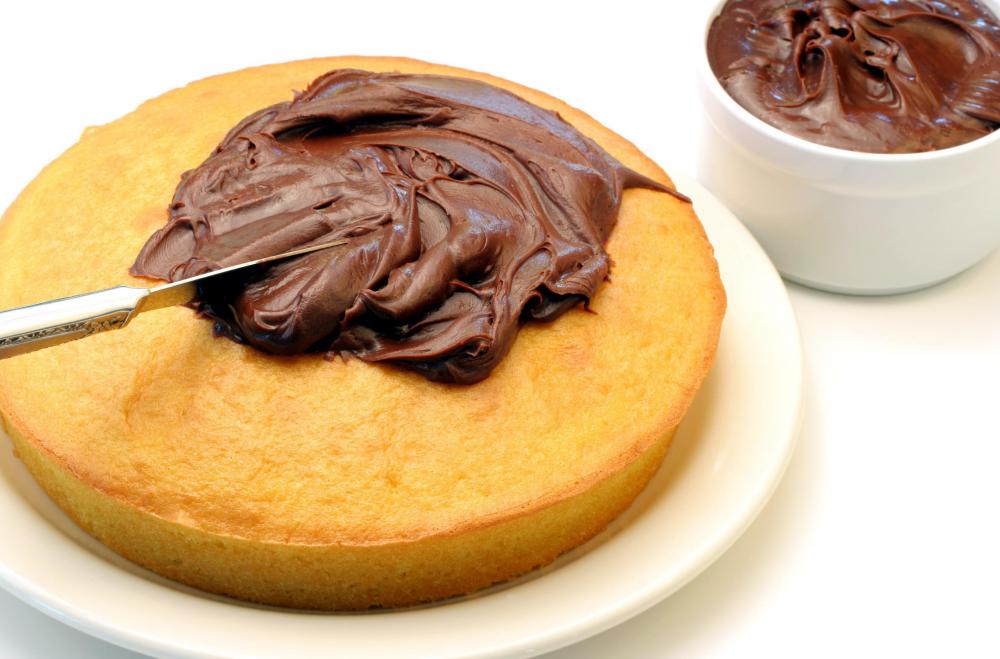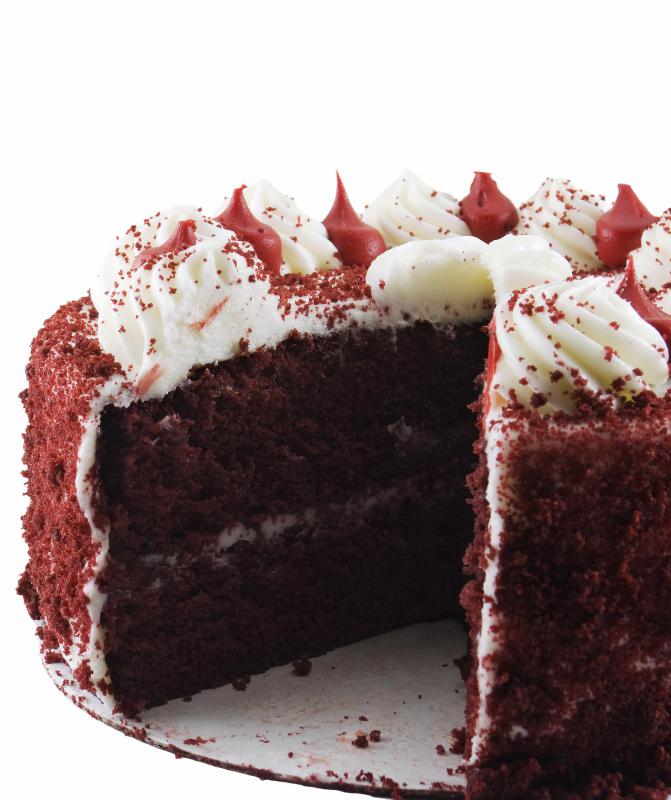At DelightedCooking, we're committed to delivering accurate, trustworthy information. Our expert-authored content is rigorously fact-checked and sourced from credible authorities. Discover how we uphold the highest standards in providing you with reliable knowledge.
What Are the Best Tips for Making Homemade Cake Frosting?
Homemade cake frosting can be the final finishing touch for many different types of cakes and cupcakes, and the best part is, it's pretty easy to make. There are many types of homemade cake frosting, and the two most common options are buttercream and cream cheese frosting, with various flavors added depending on preference. When making cake frosting, make sure to follow the recipe measurements carefully. In addition, the most important thing to remember when making buttercream frosting is to use real butter, not reduced-fat butter or spreads made of vegetable oil, which will not lead to the same smooth, tasty final product. In some cases, stick margarine can be substituted for stick butter, but as a general rule, real butter should be used.
In general, there are few ingredients included in homemade cake frosting. The basis of most frostings is either butter or cream cheese mixed with confectioner's sugar. It is always a good idea to sift the confectioner's sugar first, to make sure that there are no clumps and that the icing will be smooth. Vanilla is added to most frostings to give them a stronger flavor, although a basic buttercream frosting can simply be butter and powdered sugar mixed together. Cocoa can be added to give it chocolate flavor, or other ingredients can be added to match the flavor of the cake, such as fruit flavors or baking spices.

The butter or cream cheese should be softened — not melted — before creaming it together with the sugar. If the consistency of the homemade cake frosting is not smooth or thin enough to spread, adding a little bit of milk or cream can help. Frosting should be mixed until it reaches spreadable consistency, but continuing to mix it can cause it to continue to thicken, so it is important to be judicious. Although cream makes an excellent addition to homemade cake frosting, it is difficult to make an entire whipped cream frosting at home, because it tends to be too thin, but there are recipes for it.

After the frosting is made, it generally can be kept in a refrigerator for a few weeks, but it's important to regularly check on it to make sure it's still good before using it again. Some bakers find that adding a little bit of baking soda — no more than a pinch — to homemade cake frosting can help keep it soft and prevent it from cracking. If it does start to harden, it probably is a good idea to just start over from scratch rather than trying to salvage it, because it likely will just taste like the refrigerator anyway.
AS FEATURED ON:
AS FEATURED ON:















Discussion Comments
The nice thing about making a homemade buttercream frosting with the butter/powdered sugar recipe is that it is nearly goof-proof. If it's a little stiff, add a tablespoon of milk. If it's not stiff enough, add a little more powdered sugar. You can tinker with this recipe until it's "right." Cooked frostings are not nearly so forgiving.
Post your comments